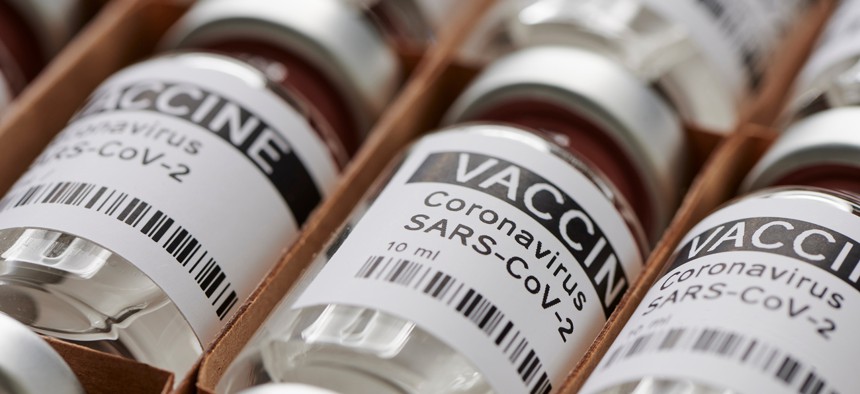
Shutterstock.com
Our Next Supply Chain Nightmare in the COVID-19 Response
As much as 90% of the medical glass needed for vaccine vials is made overseas.
By this time next year, I predict Americans will covet borosilicate glass in the same way they do N95 masks. Because this durable and heat-resistant glass is what’s needed to make vials — vials that hold the vaccines against COVID-19.
We’ve known for months that a surge in demand is coming, yet the vast majority — 70% to 90% — of medical glass is made overseas. And already, there is concern that nations will block exports to protect their own supplies.
Germany-based Schott AG, one of the world’s largest medical glassmakers, says it has received requests for a billion vials, or double what it can produce this year. Johnson & Johnson alone bought 250 million vials at the start of the pandemic, which left other vaccine makers searching for glass.
When will those stockpiles run out?
During the first phase of high-priority vaccinations the supply may be adequate, but "when we get to late 2021 and 2022 and start looking at a global demand of over 10 billion doses — assuming vaccines that require two doses — that's when vial capacity becomes tight," Harvard Medical School lecturer Prashant Yadav told Business Insider.
The supply chain for vials is particularly challenging because increasing manufacturing capacity for medical glass takes months and hundreds of millions of dollars. It often involves the construction of new furnaces.
When that much money is required, if manufacturers bear the full cost of expansion with uncertain demand for vials, they may decide not to expand, or expansion may be insufficient to meet the demand. The risk to companies of under-investing is low — they leave some profit on the table. It’s the rest of society that suffers when domestic makers of critical equipment underinvest.
There are three levers the federal government has at its disposal to strengthen the medical glass supply chain, or any supply chain, in an emergency:
1. The Defense Production Act. It is routinely used for the production of military equipment. Earlier this year, President Trump invoked this law for the production of N95 respirators and ventilators, but not glass.
2. Purchase commitments. This is the route taken thus far. In June, the federal government awarded Corning a $204 million contract and SiO2 Materials Science a $143 million contract to scale up vial production aggressively. Corning makes a special kind of medical glass, called Valor, which is less susceptible to breakage on rapidly moving conveyor belts. And SiO2 makes a glass-plastic hybrid vial — an innovation that is critical. In July, SiO2 announced it had successfully scaled its manufacturing capacity ahead of schedule to 400 million doses and was on track to hit 1.2 billion before the end of 2020.
3. Direct loans or loan guarantees. This is the one lever the government hasn’t pulled during the pandemic. The authority actually exists in Title III of the Defense Production Act, but it has not been used. In June, the Defense Department signed an agreement to delegate this authority to the U.S. International Development Finance Corporation. The DFC is targeting investments between $10 million and $500 million, and is taking requests for proposals now.
This could be a game-changer for American manufacturing, enabling more domestic companies to enter in-demand markets and not just the ones tapped by the administration to do so. But we’re worried that not enough manufacturers, especially medium-sized ones, are even aware of this opportunity.
With infections soaring and vaccines gaining approval, the government itself is ramping up, bringing online new weapons in the fight against COVID-19. But it takes considerable effort to keep track of it all.
Our country must issue a call for new recruits: American glass manufacturers, please volunteer.
Chandra Brown is the CEO of MxD, the nation’s digital manufacturing institute, based in Chicago. She is the former Deputy Assistant Secretary of Manufacturing at the U.S. Department of Commerce under President Obama.
NEXT STORY: D.C. Mayor Asks For More Inauguration Security






